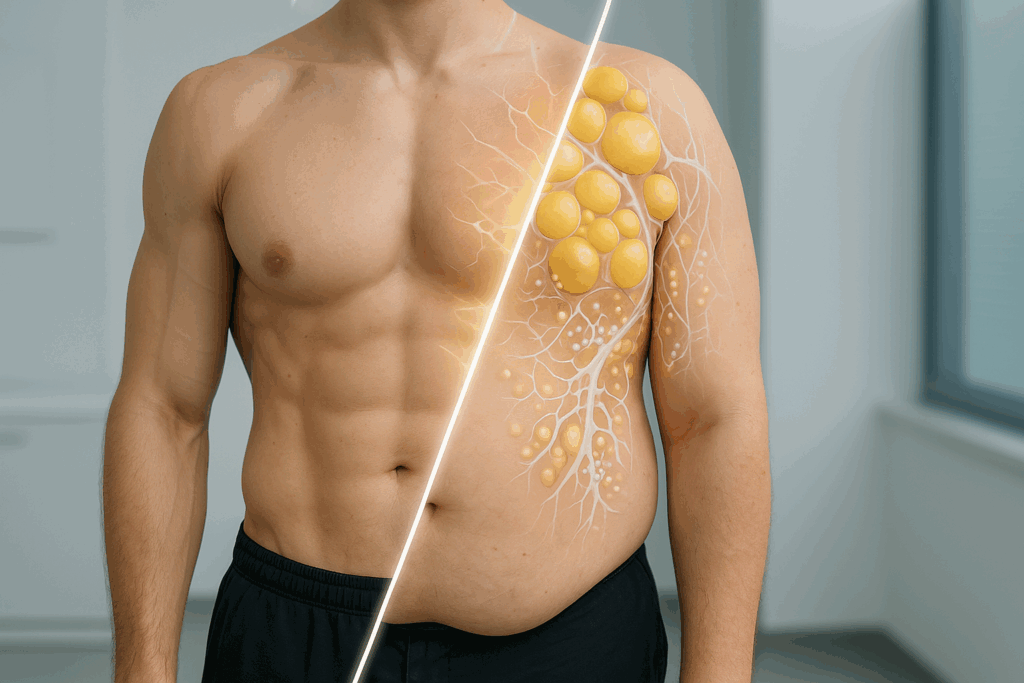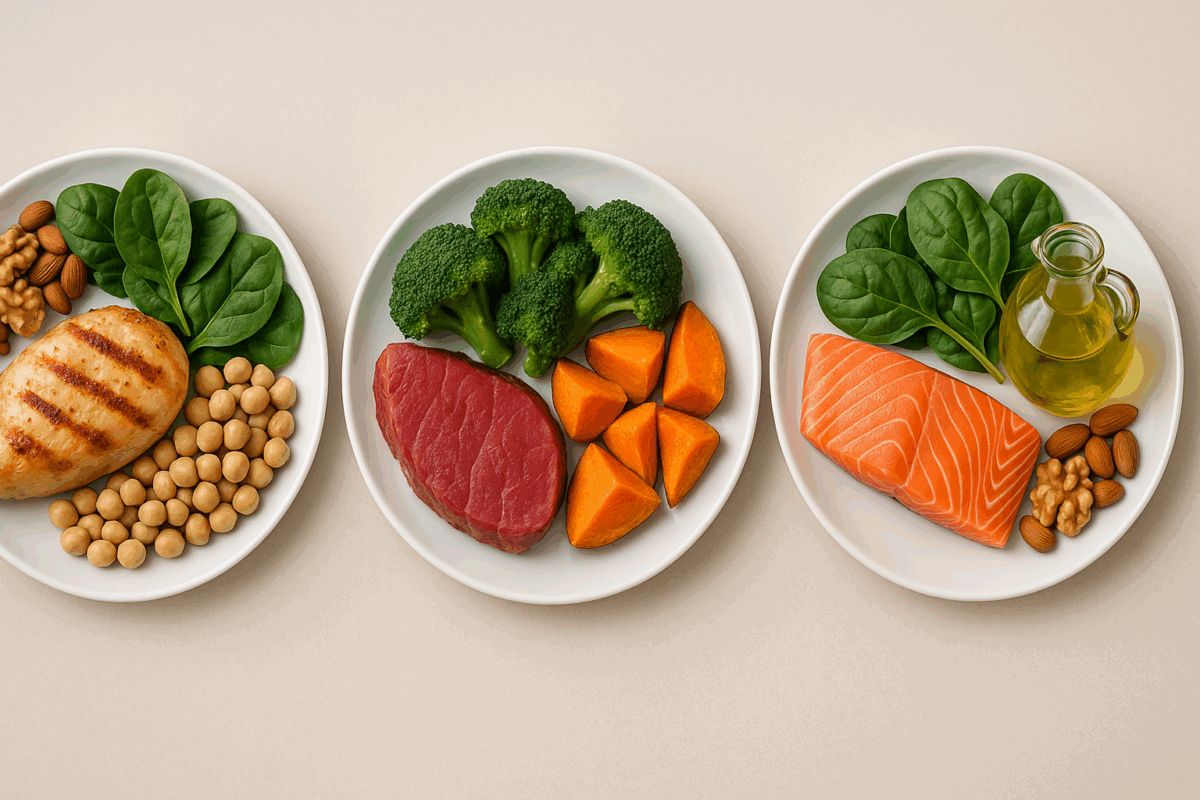In the modern landscape of nutritional science, the high protein fasting diet has emerged as a sophisticated, results-driven approach that combines the metabolic benefits of intermittent fasting with the muscle-preserving and satiating power of protein. This strategic synergy not only fosters fat loss but also enhances lean muscle retention, metabolic flexibility, and long-term health. For individuals seeking sustainable nutrition results without compromising muscle mass or energy, this hybrid strategy offers a comprehensive framework rooted in evidence-based practice. In this ultimate guide, we explore the foundational principles, physiological mechanisms, and practical tools necessary to implement a high protein fasting diet with precision, safety, and long-term success.
You may also like : The Ultimate Guide to Choosing a High Protein Diet Name That Fits Your Goals

Understanding the Foundations of Fasting and Protein-Based Nutrition
Fasting has long been embedded in human history, whether through cultural traditions, religious practices, or survival scenarios. In recent years, it has been recontextualized within clinical and wellness settings, particularly for its role in metabolic regulation. Intermittent fasting—an umbrella term encompassing eating patterns such as time-restricted feeding, alternate-day fasting, and the 5:2 method—has gained significant scientific support for its ability to optimize insulin sensitivity, support autophagy, and recalibrate hormonal rhythms.
At the heart of these benefits lies a critical concern: the preservation of lean muscle mass. Fasting, especially prolonged, can induce catabolism—a process by which the body breaks down muscle tissue for fuel. Herein lies the rationale for integrating high-quality protein intake within the fasting framework. Protein serves not only as a structural substrate for muscle but also as a key hormonal signaler, particularly through amino acids like leucine that stimulate muscle protein synthesis (MPS) via the mTOR pathway. A protein-focused approach tempers the catabolic risks of fasting, allowing individuals to harness its metabolic advantages without compromising muscle integrity.
Moreover, the thermogenic properties of protein—known as the thermic effect of food (TEF)—increase postprandial energy expenditure, supporting body recomposition goals. By strategically aligning fasting windows with targeted, high-protein meals, individuals can create a hormonal and metabolic environment that favors fat oxidation, muscle maintenance, and satiety.

Why a High Protein Fasting Diet Enhances Fat Loss and Muscle Preservation
The distinctive advantage of a high protein fasting diet lies in its dual capacity to promote adipose tissue reduction while mitigating the muscle loss typically associated with caloric restriction. Protein’s satiating effects are well-documented, with multiple studies indicating that it outperforms carbohydrates and fats in promoting fullness, reducing overall caloric intake, and minimizing cravings during fasting windows.
From a biochemical perspective, high-protein intake supports the maintenance of lean body mass through the stimulation of MPS, particularly when spaced evenly throughout the eating window. This is especially crucial during fasting protocols where energy availability is constrained and the risk of muscle catabolism is elevated. By including sufficient quantities of bioavailable protein—derived from sources like eggs, whey, fish, and lean meats—individuals can safeguard muscle tissue while fostering a negative energy balance conducive to fat loss.
Additionally, fasting naturally enhances insulin sensitivity and promotes ketogenesis, a metabolic state that favors fat oxidation over glucose metabolism. When combined with a protein-centric refeeding strategy, this promotes a hormonal milieu characterized by elevated growth hormone, reduced insulin, and optimized leptin signaling. These hormonal shifts not only facilitate weight loss but also support cellular repair, energy regulation, and appetite control—cornerstones of sustainable nutrition results.
Crucially, a protein fast diet approach also reduces the risk of reactive hypoglycemia—sudden blood sugar crashes often triggered by high-carbohydrate refeeding. By centering meals around protein with moderate fat and low-glycemic vegetables, glucose fluctuations are minimized, and energy remains stable throughout the day.

Structuring Your Eating Window on a High Protein Fasting Diet
A successful high protein fasting diet requires thoughtful planning of eating windows to maximize muscle protein synthesis, satiety, and energy efficiency. One of the most commonly adopted fasting schedules is the 16:8 protocol, where individuals fast for 16 hours and consume all meals within an 8-hour period. For those new to fasting, beginning with a 14:10 structure may offer a more sustainable transition before progressing to more extended fasting durations.
During the eating window, protein intake should be evenly distributed across two to three meals to stimulate MPS multiple times throughout the day. This pattern is more effective in preserving lean mass than concentrating all protein in a single meal. Each meal should ideally provide 25–40 grams of high-quality protein, depending on the individual’s body weight, age, and physical activity level.
Importantly, the inclusion of leucine-rich proteins—such as whey, cottage cheese, and poultry—can trigger maximal MPS more efficiently. Timing protein intake around physical activity, particularly resistance training, further amplifies anabolic signaling and recovery. For example, consuming a protein-rich meal or shake within two hours post-exercise has been shown to enhance muscle repair and adaptation.
Hydration during fasting windows should not be neglected. In fact, water, electrolytes, and non-caloric beverages like herbal teas and black coffee can support energy and curb hunger. Some practitioners incorporate small amounts of branched-chain amino acids (BCAAs) or bone broth during longer fasts to protect muscle tissue, though this may technically break the fast and should be evaluated based on personal goals.

Choosing the Right Protein Sources for Optimal Results
The efficacy of a high protein fasting diet hinges not only on quantity but also on the quality and diversity of protein sources consumed. Animal-based proteins offer complete amino acid profiles and high bioavailability, making them especially effective for stimulating MPS and supporting recovery. These include lean cuts of beef, chicken breast, turkey, eggs, dairy products like Greek yogurt and cottage cheese, as well as seafood such as salmon, tuna, and shrimp.
Whey protein isolate remains a gold standard supplement in this approach due to its rapid absorption, high leucine content, and convenience—particularly for individuals seeking a quick post-workout meal or struggling to meet daily protein targets. Casein protein, on the other hand, digests slowly and is ideal for evening consumption to support overnight muscle repair.
Plant-based individuals can still thrive on a protein fast diet by combining complementary sources to form complete proteins. Examples include pairing legumes with whole grains (e.g., black beans with brown rice), tofu with quinoa, or tempeh with lentils. While plant proteins generally offer lower bioavailability and less leucine, strategic meal planning and supplementation with vegan protein powders can overcome these limitations.
Additionally, collagen peptides—though incomplete in amino acid composition—can be incorporated to support joint, skin, and gut health. When used alongside a complete protein source, collagen supplements provide functional benefits that complement a high protein fasting diet, particularly for aging populations or those with increased physical demands.

Navigating Macronutrient Ratios Beyond Protein
While protein is the centerpiece of this dietary strategy, understanding how to balance carbohydrates and fats is crucial for maximizing metabolic outcomes. Fats, particularly monounsaturated and polyunsaturated varieties from olive oil, avocado, nuts, seeds, and fatty fish, provide satiety, hormonal support, and anti-inflammatory benefits during eating windows. They also serve as a primary fuel source during fasting, especially as the body shifts into a fat-burning state.
Carbohydrates, though often reduced in fasting diets, should not be demonized. Strategic consumption of complex, low-glycemic carbohydrates—such as sweet potatoes, legumes, and cruciferous vegetables—can support training performance, replenish glycogen, and provide dietary fiber critical for gut health. Timing these carbohydrates around physical activity ensures they are efficiently utilized rather than stored, reducing the risk of insulin spikes and fat gain.
Cycling carbohydrate intake in alignment with activity levels (e.g., higher carb on training days, lower on rest days) allows for both metabolic flexibility and sustained performance. This cyclical approach, when combined with high protein intake, enables the body to switch between fuel sources efficiently—a key marker of metabolic health.
Ultimately, the macronutrient composition of a high protein fasting diet should reflect individual goals, activity levels, and metabolic tolerance. Some may thrive on a higher fat, ketogenic-leaning version, while others perform better with moderate carbohydrates to support endurance or strength training.

Incorporating Exercise into a High Protein Fasting Diet
Exercise, particularly resistance training, is a potent synergist to the high protein fasting diet, enhancing muscle retention, improving insulin sensitivity, and accelerating fat loss. Strength training stimulates MPS independently of nutrition and becomes even more effective when combined with protein-rich meals post-workout.
Fasting prior to exercise can promote fat oxidation, as glycogen stores are depleted and the body is more likely to mobilize fat for fuel. However, performance in high-intensity or anaerobic activities may suffer when training in a fasted state, especially for individuals unadapted to low-glycogen conditions. Therefore, strategic adjustments are necessary based on workout type and intensity.
For example, endurance training in the fasted state can be effective for fat adaptation, while strength or hypertrophy training may benefit from a pre-workout protein shake or small meal. In either case, post-exercise nutrition should prioritize at least 25 grams of protein with a moderate amount of carbohydrates to facilitate recovery and glycogen replenishment.
High-intensity interval training (HIIT) also pairs well with a protein fast diet, as it stimulates mitochondrial biogenesis, boosts metabolic rate, and requires shorter durations. When interwoven with resistance training and steady-state cardio, this comprehensive exercise protocol complements the hormonal and metabolic advantages of fasting while maximizing physical performance and body composition results.
Managing Hunger and Energy Levels During Fasting Windows
A primary concern for many considering a high protein fasting diet is managing hunger and energy dips during fasting periods. Fortunately, several strategies can mitigate these challenges and support adherence over time. Protein’s satiating effects carry over beyond the eating window, helping to curb appetite during fasting hours. Meals high in fiber, healthy fats, and slow-digesting proteins further prolong satiety and stabilize blood sugar.
Hydration plays a critical role in appetite regulation, as thirst is often mistaken for hunger. Drinking water consistently throughout the day, particularly with added electrolytes like sodium, magnesium, and potassium, can alleviate fatigue, dizziness, and cravings associated with fasting.
Caffeine from black coffee or green tea offers both appetite suppression and mental clarity, though intake should be moderated to avoid gastrointestinal distress or sleep disruption. Herbal teas like peppermint or ginger can soothe digestive discomfort and provide a comforting ritual during fasting hours.
Psychological strategies—such as mindfulness, distraction techniques, or preoccupying activities—can also help shift focus away from food. Over time, many individuals report that their hunger cues adjust and become more manageable as the body adapts to the fasting rhythm.
Sleep quality, stress management, and overall nutrient density also influence hunger and energy regulation. Ensuring adequate rest and recovery, consuming micronutrient-rich whole foods during the eating window, and minimizing processed or refined carbohydrates collectively contribute to a smoother, more sustainable fasting experience.
Adjusting the High Protein Fasting Diet for Different Lifestyles and Goals
One of the greatest strengths of a high protein fasting diet is its adaptability. Whether you’re an athlete, a busy professional, a student, or a retiree, the protocol can be customized to suit your schedule, goals, and preferences. For athletes, particularly those engaged in regular strength or endurance training, protein needs may range from 1.6 to 2.2 grams per kilogram of body weight per day. These individuals may benefit from a narrower fasting window (e.g., 12–14 hours) to allow for multiple feeding opportunities that optimize MPS and recovery.
For sedentary individuals seeking weight loss, longer fasting periods and lower overall caloric intake may be appropriate, provided protein intake remains sufficient to protect lean mass. In such cases, two high-protein meals per day—spaced four to five hours apart—may suffice.
For shift workers, parents, or those with irregular schedules, fasting windows can be flexibly adjusted. The key is consistency over time and strategic nutrient timing that supports personal energy demands. Even alternate-day or once-per-week extended fasting, combined with high-protein refeeding, can yield measurable health benefits for those unable to commit to daily time-restricted eating.
Vegetarian and vegan adaptations are also feasible with careful meal planning and supplementation. Incorporating fermented plant proteins, lentils, legumes, soy products, and fortified vegan protein powders ensures sufficient amino acid diversity and intake. Combining this with appropriate resistance training allows plant-based individuals to enjoy the full spectrum of benefits offered by the protein fast diet.
The Science Behind the Protein Fast Diet and Longevity
Beyond weight loss and muscle maintenance, the high protein fasting diet offers promising implications for longevity and cellular health. Fasting stimulates autophagy, a natural cellular recycling process that removes damaged organelles and proteins, reducing the risk of chronic disease and age-related dysfunction. This regenerative mechanism is enhanced when fasting is paired with nutrient-dense, protein-rich refeeding, which supplies the raw materials necessary for cellular repair and renewal.
Moreover, fasting modulates critical longevity pathways such as AMPK, sirtuins, and mTOR, which regulate energy metabolism, inflammation, and cellular stress responses. Protein, while a potent mTOR activator, can be strategically timed to prevent excessive stimulation and allow for periods of autophagy during the fast. This balance between nutrient abundance and deprivation mirrors evolutionary eating patterns and may contribute to greater metabolic resilience and healthspan.
Emerging research also links fasting with improvements in gut microbiome diversity, cardiovascular markers, and cognitive function. When combined with high-protein nutrition, these effects may be further amplified, particularly through the modulation of glucagon-like peptide-1 (GLP-1), a satiety hormone involved in glucose regulation and appetite control.
These longevity-promoting effects do not require extreme restriction or rigidity. Rather, moderate, sustainable application of the high protein fasting diet—along with attention to stress management, sleep, and physical activity—can offer profound health benefits over the long term.

High Protein Fasting Diet for Aging Populations
Aging adults face unique challenges in maintaining muscle mass, metabolic health, and immune resilience. Sarcopenia—the age-related loss of skeletal muscle—is a key predictor of frailty, falls, and functional decline. The high protein fasting diet, when adapted appropriately, can be a powerful tool to combat this trajectory.
Older adults may require higher protein intakes—often 1.2–1.5 grams per kilogram of body weight per day—to offset anabolic resistance. This refers to the reduced ability of aging muscle to respond to amino acids. Thus, evenly spaced protein meals (e.g., two or three 30-gram servings) are more effective than one large protein meal.
Because fasting may impair appetite in older individuals, shorter fasting windows (e.g., 10–12 hours) are more suitable. Including collagen, creatine, and omega-3s can further support joint health, muscle integrity, and inflammation control.
Strength training remains essential, even in later decades. Studies show that resistance exercise combined with adequate protein is the most effective intervention for preserving independence, bone density, and metabolic function with age.
Tools, Technology, and Tracking for Long-Term Success
Modern tools and wearable technologies can support those committed to a high protein fasting diet. Continuous glucose monitors (CGMs), for instance, provide real-time feedback on how different foods impact blood sugar. This helps identify optimal foods for fasting days and refine carbohydrate intake for individual tolerance.
Apps like Zero, Fastic, or DoFasting track fasting hours and provide motivation through streaks and community support. Nutrient trackers such as Cronometer or MyFitnessPal offer detailed insights into protein grams, amino acid profiles, and micronutrient intake—essential data for dialing in the diet’s precision.
Body composition scales or bioimpedance devices (e.g., InBody) can provide feedback beyond weight loss, tracking lean mass, hydration, and visceral fat. This is especially helpful for those focusing on recomposition or preventing muscle loss.
Journaling or habit tracking may also increase accountability and mindfulness. Recording hunger levels, mood, sleep, and energy across different fasting lengths and protein amounts can uncover trends that guide future adjustments.
Addressing Common Misconceptions and Challenges
Despite its evidence base, the high protein fasting diet is often subject to misunderstandings. One prevalent myth is that skipping breakfast or extending fasting hours inevitably leads to muscle loss. In reality, muscle preservation hinges more on total daily protein intake, resistance training, and anabolic signaling than meal frequency alone. When protein targets are met and exercise is consistent, muscle mass can be maintained—even in prolonged fasts.
Another concern is that high protein intake may harm kidney function. While individuals with pre-existing kidney disease should consult a healthcare provider, healthy individuals generally tolerate increased protein well. In fact, multiple studies affirm the safety of protein intakes above the Recommended Daily Allowance (RDA), particularly in active populations.
Others worry that fasting may trigger disordered eating patterns. While fasting is not appropriate for everyone, particularly those with a history of eating disorders, many find it enhances food mindfulness, reduces emotional eating, and promotes a healthier relationship with hunger. The key is to approach fasting as a tool—not a punishment—and to maintain flexibility, self-awareness, and medical supervision where necessary.
The Role of High Protein Fasting Diets in Immunity and Inflammation
Immunonutrition—the intersection of diet and immune health—has gained new relevance in a world increasingly aware of viral threats and chronic disease. Fasting triggers immune cell regeneration, reduces pro-inflammatory cytokines, and promotes autophagic clearance of dysfunctional immune cells. These effects are complemented by protein’s role in producing antibodies, immune cells, and healing tissues.
Glutamine, for instance, is a conditionally essential amino acid during illness or injury and supports gut integrity, where 70% of the immune system resides. Arginine and cysteine are also crucial for immune modulation and detoxification pathways.
To support immune health, prioritize complete proteins and include foods rich in zinc (e.g., beef, pumpkin seeds), vitamin D (e.g., egg yolks, fortified dairy), and selenium (e.g., Brazil nuts, fish). Bone broth and gelatin also provide amino acids and collagen that reinforce mucosal defenses in the respiratory and digestive tracts.
During illness or recovery, it’s advisable to shorten fasting windows or increase feeding frequency temporarily to provide continuous nourishment and support the body’s defense mechanisms.
Frequently Asked Questions: Advanced Insights on the High Protein Fasting Diet
1. Can the high protein fasting diet be combined with carb cycling for enhanced results?
Yes, integrating carb cycling with a high protein fasting diet can significantly enhance metabolic flexibility, particularly for those involved in strength training or high-intensity interval workouts. Carb cycling involves rotating high and low carbohydrate intake throughout the week to optimize muscle glycogen replenishment while maintaining fat-burning states during low-carb days. When paired with fasting, this approach allows the body to operate efficiently in both fat- and carbohydrate-fueled states. On high-carb training days, individuals can break their fast with a protein- and complex carb-rich meal to support performance and recovery. On rest or low-intensity days, lower carb intake promotes deeper fat oxidation, while protein remains the dietary anchor to prevent muscle breakdown.
2. What are the psychological benefits of following a protein fast diet?
The psychological impact of a protein fast diet extends far beyond physical transformation. Many individuals report increased mental discipline, reduced emotional eating, and a healthier relationship with food due to the structured fasting-eating rhythm. The act of delaying gratification builds willpower, which can translate to better decision-making in other areas of life. Furthermore, ketone production during longer fasting periods has been linked to neuroprotective effects and improved mood stabilization. By focusing meals on high-quality protein, individuals also reduce blood sugar volatility, which plays a pivotal role in curbing irritability and mental fatigue throughout the day.
3. How can a high protein fasting diet support hormonal balance in perimenopausal and menopausal women?
Hormonal fluctuations during perimenopause and menopause can increase insulin resistance, reduce muscle mass, and alter fat distribution. A high protein fasting diet helps counter these changes by promoting lean mass retention, improving insulin sensitivity, and reducing systemic inflammation. For women navigating hormonal transitions, shortening fasting windows to 12–14 hours and focusing on evenly spaced, protein-rich meals can prevent cortisol spikes and support thyroid function. Nutrients such as magnesium, B6, and omega-3 fatty acids—consumed during eating periods—further aid in hormone synthesis and mood regulation. Consistency and personalization are key, as individual responses to fasting vary widely during this life stage.
4. Is the high protein fasting diet safe for people with autoimmune conditions?
Many individuals with autoimmune conditions have found success with a high protein fasting diet, especially when inflammation and metabolic dysfunction are contributing factors. Fasting may reduce pro-inflammatory cytokines and support immune regulation, while high-quality protein intake assists in tissue repair and antibody production. However, the type and timing of protein are crucial—grass-fed, wild-caught, and minimally processed proteins are preferable to reduce exposure to potential food triggers. Including gut-healing nutrients like glutamine, collagen, and zinc during feeding windows can support the intestinal barrier, often compromised in autoimmune disorders. Close monitoring by a healthcare provider is advised to tailor fasting frequency and nutrient intake to individual needs and avoid potential nutrient depletion.
5. What are the long-term cognitive implications of sustained adherence to a protein fast diet?
Over time, sustained use of a protein fast diet may confer neuroprotective benefits, particularly through improved mitochondrial efficiency and reduced oxidative stress. Protein provides the building blocks for neurotransmitters such as dopamine and serotonin, essential for memory, mood, and cognitive function. Fasting periods, especially when ketones are produced, have been shown to increase brain-derived neurotrophic factor (BDNF), which supports synaptic plasticity and cognitive resilience. Additionally, limiting processed sugars and maintaining stable blood glucose levels may reduce the risk of neurodegenerative conditions like Alzheimer’s, sometimes referred to as “type 3 diabetes.” Regular cognitive stimulation, sleep hygiene, and micronutrient-rich meals further amplify these effects when paired with a protein-focused fasting lifestyle.
6. How can individuals with physically demanding jobs modify a protein fast diet without losing energy?
Physically active individuals—such as construction workers, first responders, or manual laborers—can adapt the high protein fasting diet by slightly shortening the fasting window or including strategic mini-meals during extended work periods. In these cases, maintaining electrolyte balance and proper hydration is crucial to prevent fatigue or dizziness. Incorporating slow-digesting proteins like eggs, lentils, or mixed nuts in the first post-fast meal can sustain energy without triggering rapid glucose fluctuations. In some cases, a midday protein shake with added fats (e.g., nut butter or MCT oil) can serve as a bridge during longer shifts without disrupting the overall fasting rhythm. Flexibility is essential, and these individuals should prioritize recovery nutrition on physically intense days to maintain performance and health.
7. What is the optimal way to break a prolonged fast in a protein fast diet?
Breaking a prolonged fast (over 18 hours) requires a gentle reintroduction of nutrients to avoid digestive distress or insulin spikes. The ideal first meal should contain a moderate amount of protein—around 20–30 grams—combined with fiber-rich vegetables and a small amount of healthy fat. Bone broth, scrambled eggs with leafy greens, or a smoothie with whey protein, chia seeds, and berries offer easily digestible yet nutrient-dense options. Overloading on dense foods immediately post-fast can lead to bloating or reactive hypoglycemia. Gradually increasing meal complexity and volume over a few hours ensures smoother digestive transition and better nutrient absorption within the high protein fasting diet framework.
8. Does the high protein fasting diet affect skin health or hair quality?
Yes, dietary patterns involving a protein fast can significantly influence the quality of skin and hair over time. Protein is fundamental for collagen synthesis, keratin production, and tissue repair—deficiencies can manifest as brittle nails, thinning hair, or skin dullness. By maintaining adequate intake of amino acids like glycine and proline through foods like fish, chicken skin, or collagen supplements, individuals may observe improved elasticity and reduced fine lines. Furthermore, fasting-induced autophagy can support skin regeneration by removing damaged cells. Pairing this with antioxidants (like vitamins C and E), zinc, and omega-3s during feeding windows enhances dermal and follicular health.
9. How can you maintain social flexibility while following a strict protein fast diet?
Adherence to a protein fast diet can coexist with a vibrant social life, provided there is intentional planning and flexibility. One effective strategy is to shift fasting and eating windows slightly to accommodate social meals—such as starting a fast later after a late dinner. On planned social occasions, maintaining a protein-first mindset—even in restaurants—can help stay on track; opting for grilled meats, eggs, seafood, or legumes at gatherings reduces dietary derailment. Alcohol should be consumed in moderation and ideally with food to minimize blood sugar spikes and dehydration. Most importantly, occasional departures from routine should be framed as conscious choices, not failures—this psychological reframing fosters long-term sustainability.
10. What emerging research or innovations could shape the future of the protein fast diet?
Emerging technologies and scientific discoveries are likely to redefine the protein fast diet in the coming years. Wearable biosensors, such as glucose and ketone monitors, now allow for real-time insights into how meals and fasting periods affect metabolism. Personalized nutrition platforms using AI can adjust macronutrient ratios dynamically, enhancing results based on genetics, microbiome data, and hormonal profiles. Novel protein sources like lab-grown meat, insect protein, or mycoproteins (fungus-based proteins) offer sustainable alternatives that align with environmental goals. Additionally, research into the gut-brain axis may uncover new ways to enhance fasting-related mental clarity through microbiota modulation. As the science evolves, the high protein fasting diet is poised to become increasingly individualized, adaptive, and integrated into holistic health systems.
Conclusion: Why the High Protein Fasting Diet Is a Game-Changer for Sustainable Health
The high protein fasting diet represents a cutting-edge, science-backed nutritional strategy that harmonizes the physiological advantages of fasting with the muscle-preserving, hunger-regulating, and metabolism-enhancing properties of protein. It offers a practical and adaptable framework that supports fat loss, lean mass retention, and cellular health while allowing for personalization based on lifestyle, goals, and dietary preferences.
Rather than a rigid regimen, this approach encourages intuitive eating patterns grounded in biological rhythms and nutrient density. By embracing the protein fast diet, individuals can break free from constant meal planning, calorie counting, or unsustainable restrictions, and instead build a sustainable relationship with food that promotes long-term vitality.
Whether your goals involve body recomposition, improved metabolic health, or enhanced longevity, the high protein fasting diet provides a robust foundation upon which lasting results can be built. With consistency, education, and thoughtful implementation, this hybrid model can empower individuals to achieve their health goals while enjoying the process—and the results—for years to come.
Further Reading:
What To Know About the Protein-Sparing Modified Fast Diet
The Beginner’s Guide To A Protein-Sparing Modified Fast (PSMF)





